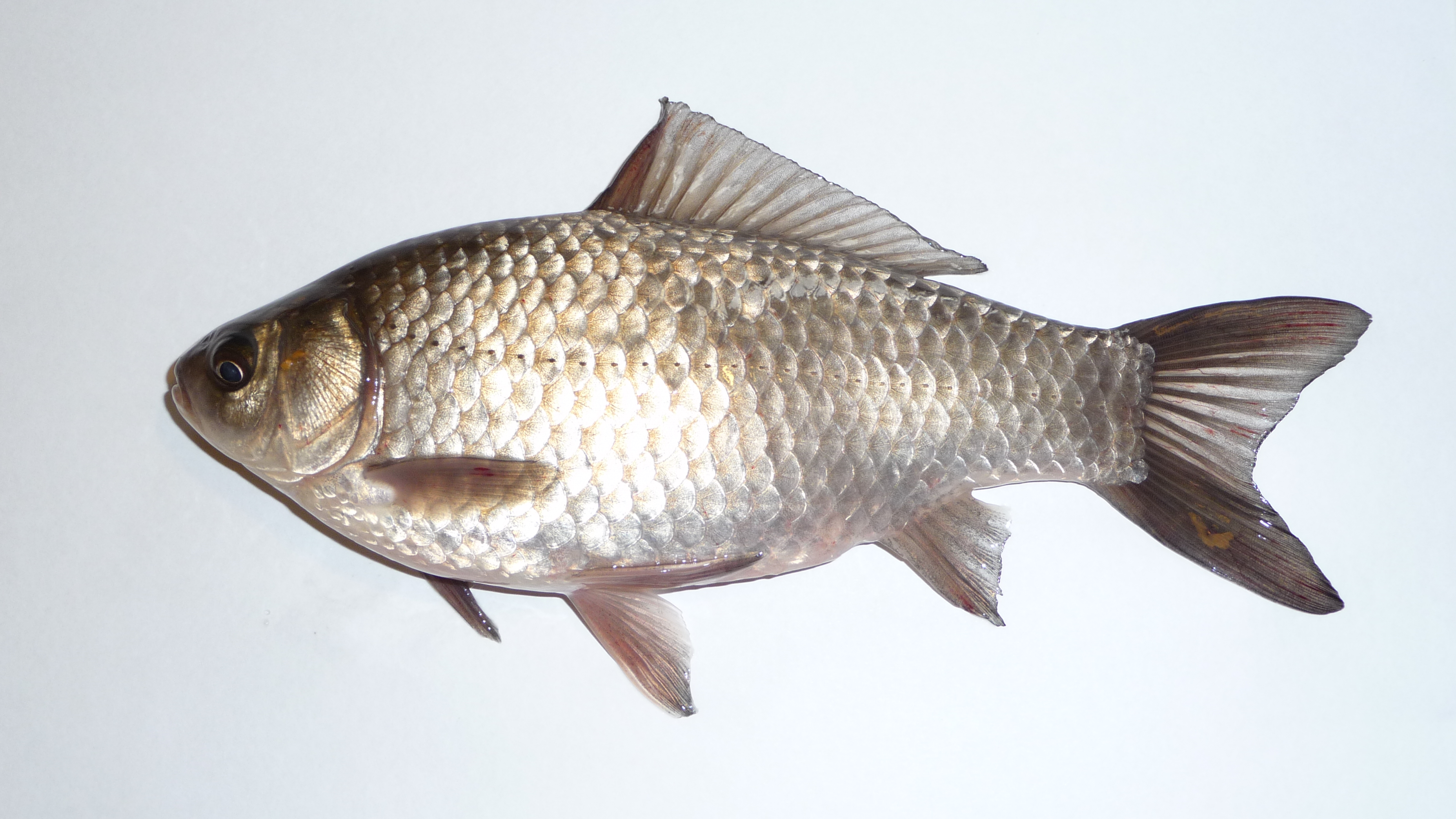Chromosome Studies of the Hybrids, Ginbuna (Carassius auratus langsdorfii)×Kinbuna (C. auratus subsp.) and Ginbuna×Loach (Misgurnus anguillicaudatus)
KOBAYASI Hiromu, OCHI Hisako
The ginbunas (Carassius auratus langsdorfii) captured in the Kanto district were exclusively females, and there was no report of capture of male fish. For understanding this curious phenomenon, comparative studies were made on the chromosomes of the ginbuna and F_1 hybrids derivatived from a cross between the ginbuna and the kinbuna (Carassius auratus subsp.) and between the ginbuna and the loach (Misgurnus anguillicaudatus). Three females of the ginbuna captured in the Kanto district were used for the present investigation. The eggs spawned by each of the females were divided into two groups; the eggs of one group were artificially inseminated with sperms of the kinbuna, and the eggs of the other group with sperms of the loach. All the larvae grown up from the two types of hybrid crosses were identical with the maternal ginbuna in their appearance. Chromosome preparations were made from kidney and gill cells with the usual air-drying technique, after pretreatment with colchicine and hypotonic solution. The results of chromosome analysis showed that the maternal ginbuna had 156 chromosomes, consisting of 17 pairs of metacentrics, 31 pairs of submetacentrics and 30 pairs of acrocentrics. The chromosomes of 14 offsprings by the hybrid crosses, so far examined, had the same chromosome number of 156. Comparing the karyotypes of the maternal ginbuna and their offsprings, we found a gross similarity in their chromosomes as far as the morphological analysis is concerned. In the present study we failed to examine the chromosomes of the paternal kinbuna and loach. However, it is generally accepted that the kinbuna has 100 chromosomes and the loach has 50 chromosomes in both sex. The most likely explanation for the present results would be that the production of the triploid offspring might be arisen by gynogenesis, as was already pointed out by Kobayasi et al. (1970) and Kobayasi (1971).
**
Diploid-tetraploid relationship among old-world members of the fish family Cyprinidae
Susumu Ohno, Junichi Muramoto, Lawrence Christian and Niels B. Atkin
Evidence suggesting that the goldfish and the carp of the family Cyprinidae are tetraploid species in relation to other members of the same family were presented. The two barb species, Barbus tetrazona and Barbus jasciatus, were chosen as representatives of diploid members of the family Cyprinidae. These barbs had the diploid chromosome number of 50 and 52 and the DNA value 20–22% that of placental mammals, while the goldfish (Carassius auratus) and the carp (Cyprinus carpio) had the diploid chromosome number of about 104 and the DNA value 50–52% that of placental mammals.
**********
KOBAYASI Hiromu, OCHI Hisako
The ginbunas (Carassius auratus langsdorfii) captured in the Kanto district were exclusively females, and there was no report of capture of male fish. For understanding this curious phenomenon, comparative studies were made on the chromosomes of the ginbuna and F_1 hybrids derivatived from a cross between the ginbuna and the kinbuna (Carassius auratus subsp.) and between the ginbuna and the loach (Misgurnus anguillicaudatus). Three females of the ginbuna captured in the Kanto district were used for the present investigation. The eggs spawned by each of the females were divided into two groups; the eggs of one group were artificially inseminated with sperms of the kinbuna, and the eggs of the other group with sperms of the loach. All the larvae grown up from the two types of hybrid crosses were identical with the maternal ginbuna in their appearance. Chromosome preparations were made from kidney and gill cells with the usual air-drying technique, after pretreatment with colchicine and hypotonic solution. The results of chromosome analysis showed that the maternal ginbuna had 156 chromosomes, consisting of 17 pairs of metacentrics, 31 pairs of submetacentrics and 30 pairs of acrocentrics. The chromosomes of 14 offsprings by the hybrid crosses, so far examined, had the same chromosome number of 156. Comparing the karyotypes of the maternal ginbuna and their offsprings, we found a gross similarity in their chromosomes as far as the morphological analysis is concerned. In the present study we failed to examine the chromosomes of the paternal kinbuna and loach. However, it is generally accepted that the kinbuna has 100 chromosomes and the loach has 50 chromosomes in both sex. The most likely explanation for the present results would be that the production of the triploid offspring might be arisen by gynogenesis, as was already pointed out by Kobayasi et al. (1970) and Kobayasi (1971).
 |
| Carassius auratus gibelio ( = cv Kingyo.) |
 |
| Carassius auratus langsdorfii. (var Hibuna.) |
 |
| Carassius auratussubsp. (var Tetsugyo) |
 |
| Misgurnus anguillicaudatus Cantor |
**
Diploid-tetraploid relationship among old-world members of the fish family Cyprinidae
Susumu Ohno, Junichi Muramoto, Lawrence Christian and Niels B. Atkin
Evidence suggesting that the goldfish and the carp of the family Cyprinidae are tetraploid species in relation to other members of the same family were presented. The two barb species, Barbus tetrazona and Barbus jasciatus, were chosen as representatives of diploid members of the family Cyprinidae. These barbs had the diploid chromosome number of 50 and 52 and the DNA value 20–22% that of placental mammals, while the goldfish (Carassius auratus) and the carp (Cyprinus carpio) had the diploid chromosome number of about 104 and the DNA value 50–52% that of placental mammals.
**********